Two seasons of abnormally stable weather and the publication of Rolando Garibotti’s new guidebook have led to a flock of alpine posers descending on El Chalten. I am one of those posers.
During the austral summer of 2013-2014 I traveled to Argentinean Patagonia with my friends Chris Cox and Drew Smith. With two months to spend in the range, we had big ambitions. Cerro Fitzroy was our hardest declared objective and secretly I harbored hopes for an ascent of Cerro Torre. After all if 140+ climbers had summited last year how hard could it be?
Video by Drew Smith
Preparations had gone well during the year leading up to our trip. I had led 5.11 trad, WI5, M9, and romped up El Cap’s Nose in 17:30. Hopes were even high enough to lure me into the gym for some cardio and heavy object moving. Alas, the harsh realities of Patagonian climbing would restore my humility.
In total I spent 54 days in El Chalten and was able to climb in the mountains on a whopping 6 of those days. Other visitors had similarly frustrating visits (including many sponsored athletes). To my knowledge while I was there <10 people summitted Fitzroy and zero made it up Cerro Torre. Historically this is not unusual, the weather is terrible, and much stronger climbers than me have returned home with less success.
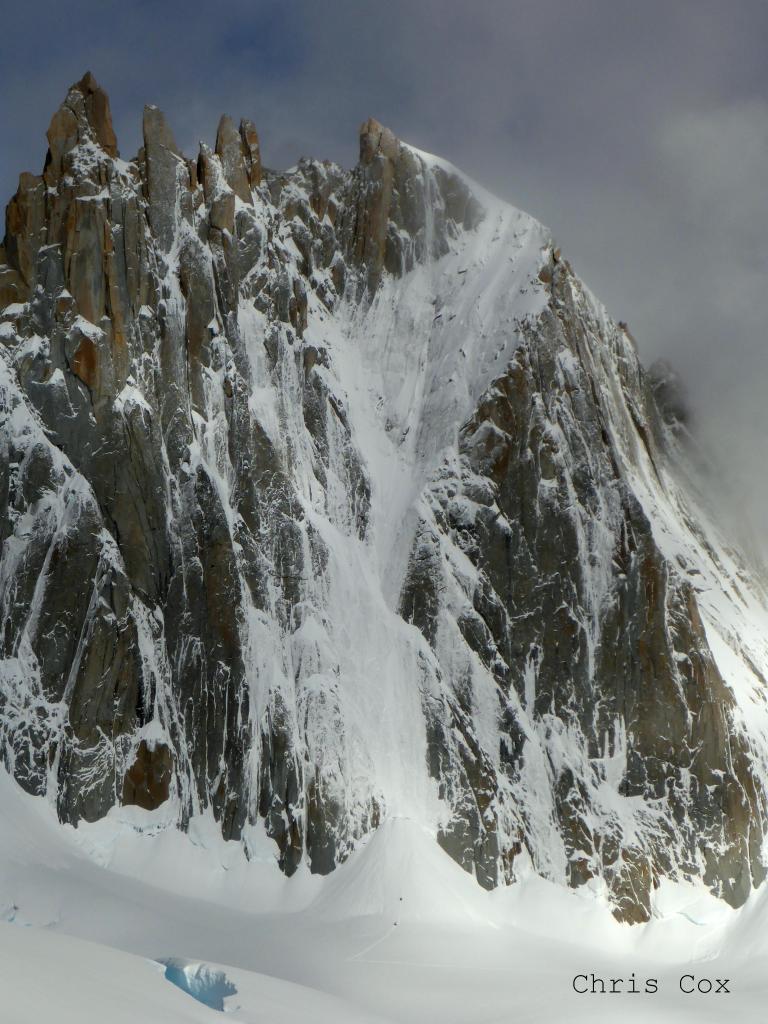
Nevertheless, I was able to climb the Brenner-Moschioni Ridge on Aguja Guillamet, the Austríaca route on Aguja de l’S, Cerro Solo, and the first ascent of a smaller summit along the Pollone Massif we christened, El Tridente. These ascents, although pedestrian compared to my initial goals, stand out as some of the most rewarding of my life. The poor conditions and massive scale of the range required an enormous effort to overcome; and it is that effort that I will remember more than anything else.
A couple of regrettable oversights limited my success. Most significantly was my leg strength/endurance. Too many times I arrived at the base camps already exhausted from the approach. In that condition it was hard to muster the confidence to attempt a maximum effort climbing route. I suspect condensing my pre-trip training into too short of a time frame left me overtrained (or not fully recovered) and contributed to my fatigue. However, I also regret spending so much of my preparation rock climbing and not enough walking uphill with a heavy pack.
Additionally, I was slow and scared on the steep snow climbing sections. The trivial traverse to gain the Whillans ramp on Aguja Poincenot shredded my nerves. This was partly due to poorly laced boots and bad ice tool selection but really I just lacked the experience with that type of climbing. Accidents in North American Mountaineering had a nice write up on snow climbing this year. (Vertical pickets with a mid-clip attachment are vastly superior to traditional top-clips and just as fast to place, why don’t I see more people rigging their pickets this way?)
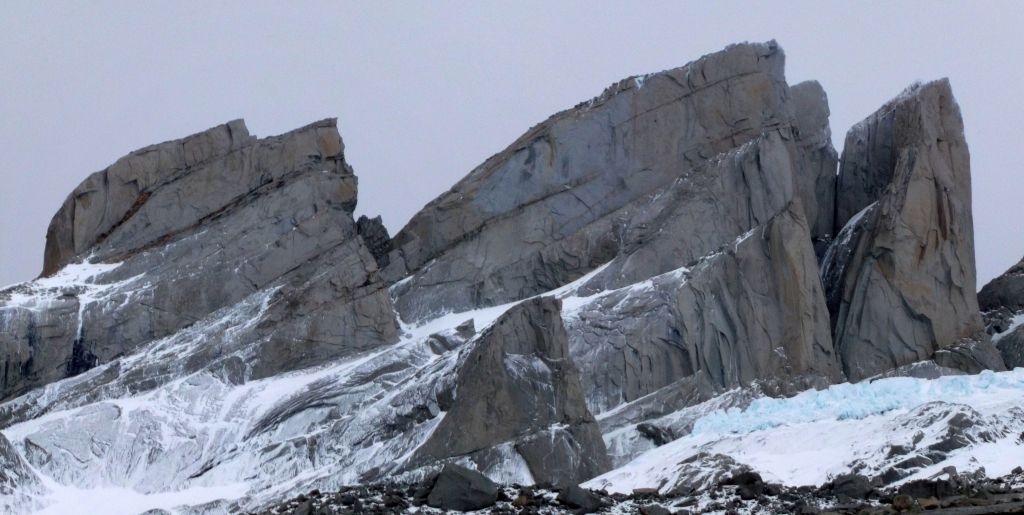
There are so many variables that contribute to an ascent in Patagonia. Every one of them has to go right to be successful. I hope the practical tips that follow will help anyone considering a trip in the upcoming seasons. Please consider these recommendations skeptically and make your own decisions.
-Food: El Chalten was getting regular deliveries of fresh produce and there are plenty of good, affordable, restaurants so you should be able to eat well in town. Get creative with your mountain food. There are a couple of new health food stores in town that supply good options in addition to the powdered potatoes available at most of the grocery stores. Any gels, electrolyte mixes, or freeze-dried meals should be brought from home.
-Rock gear: Light is right, the approaches are long. Use your best judgment and consider the guidebooks suggestions for rock gear. Bring extra nuts, pitons, and cordage to back up rappels (and bounce test all established rappel anchors; there is a lot of freeze/thaw). If you choose to cache your gear take pictures so you can be sure where it is (in case a friend ends up using or retrieving it) and know exactly what you left when your memory starts to fade after two weeks of bad weather.
-Ropes: We used a skinny 60m lead line with a tag line for rappels. Mid-season I upgraded to a stiffer 6mm static tag line, an Espirit Alpine Personal Escape rope . This stiffer tag line falls without bending, decreasing the likelihood of rappels snagging in high winds. Highly recommended.
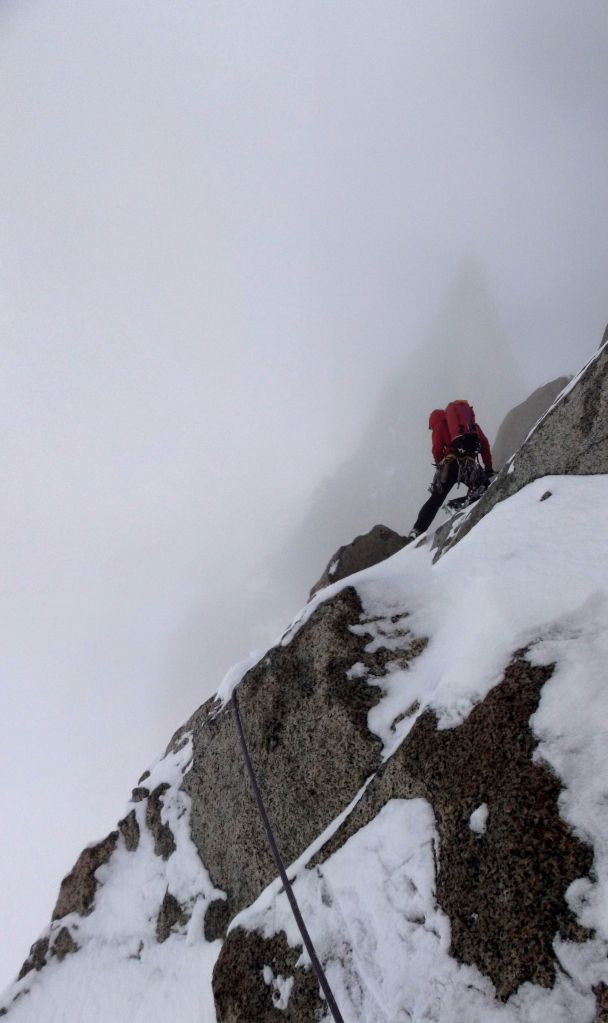
-Fitness: You will spend much more time hiking than you will climbing; train your legs. Increased capacity to walk uphill with a heavy pack could easily mean more climbing days and more success. Do not underestimate the scale of the range. Rolo’s listed approach times are difficult/impossible to pull off onsight; remember he is superhuman (the Grand Traverse of the Tetons in <7 hours; 12,000 ft gain/loss, 5.8, 14 miles!).
Steve House’s book, Training for the New Alpinism, is full of all the torturous leg work you’ll need. Good training will pay huge dividends.
-Weather: Familiarize yourself with the NOAA meteograms explained in the guidebook and on Pataclimb before leaving. These will be a regular topic of conversation so learn all the tricks while you still have good internet. The isobar maps are nice too but not as popular. We found it helpful to take screenshots of the forecasts each time before we went into the mountains so we could assess conditions compared to the graphs and better predict what things would be like the next window.
Try to monitor the forecasts a little before your arrival to get an idea of what conditions might be like, or check Colin Haley’s blog, he usually has some info. Rumors of Californian like temperatures during the weather windows were for us unfounded. Each time hope would build for good conditions and each time we were frustrated by deep snow and ice coated cracks (total of <5 pitches climbed without gloves).
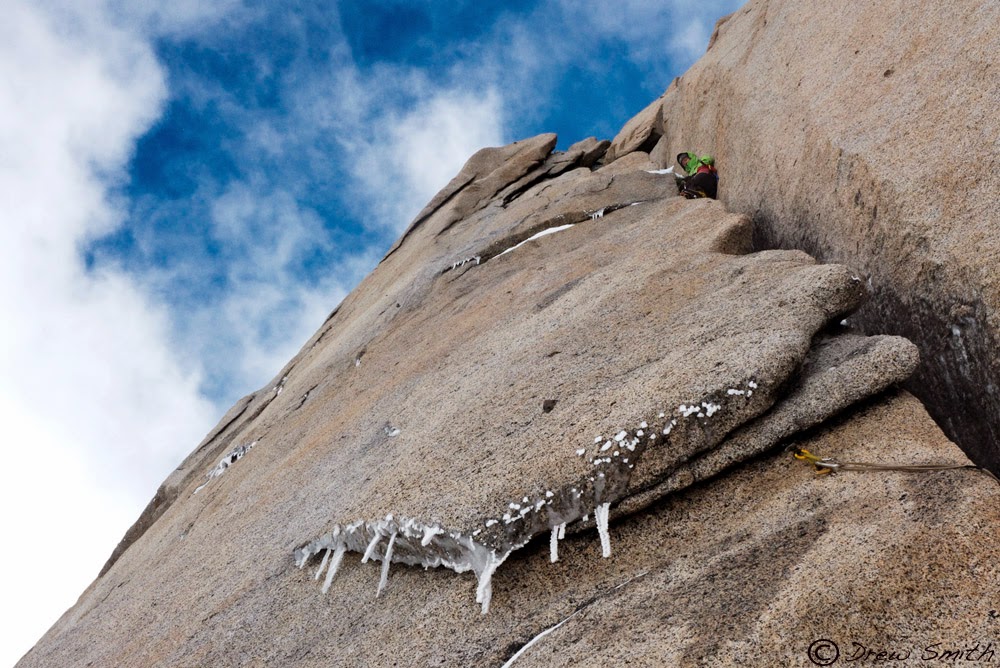
-Feet: Climbing shoes large enough accommodate warm socks area a must. I made it up the snowy parts of Guillamet with aluminum crampons strapped on Five-Ten Guide Tennies but on the frozen summit Ueli Steck looked at me like I was crazy/dumb. During every other trip into the mountains I wore Baturas. A lighter weight technical boot would be better for most routes.
-Hands: Hand jammies (ie. crack gloves) are a good option for keeping your hands warm and protecting the skin from the rough textured rock. I know, I know, they are super lame/cheating/etc… but the advantage of removability when you need to put your insulating gloves on at belays or the transitions to snow/ice climbing is substantial. They also don’t restrict blood flow. My inflated ego prevented me from wearing them, I wore tape gloves instead, and regretted it (Even the pros use hand jammies).
-Fuel Bottles: We had some issues with the isobutane fuel bottles in town. On certain canisters the pin was too far recessed to work with Chris’ Jetboil. The pin on my MSR MicroRocket was longer and seemed to worked on any bottle. Certain stores sold good bottles but I can’t remember which, ask around. Just be sure to check the functionality of your stove with the bottle before leaving town or you could end up doing some dicey work grinding down the bottle adapter while sparks fly like I had to.
-Rolo’s Tips: In the guidebook Rolo describes instructions for a “sleeping bag triangle” so that two people can share one bag. Saves weight and is actually not that uncomfortable. I got my supplies at Seattle Fabrics. A small piece of plastic tubing (~6”) to use as an alpine straw is also very useful for drinking water out of potholes.
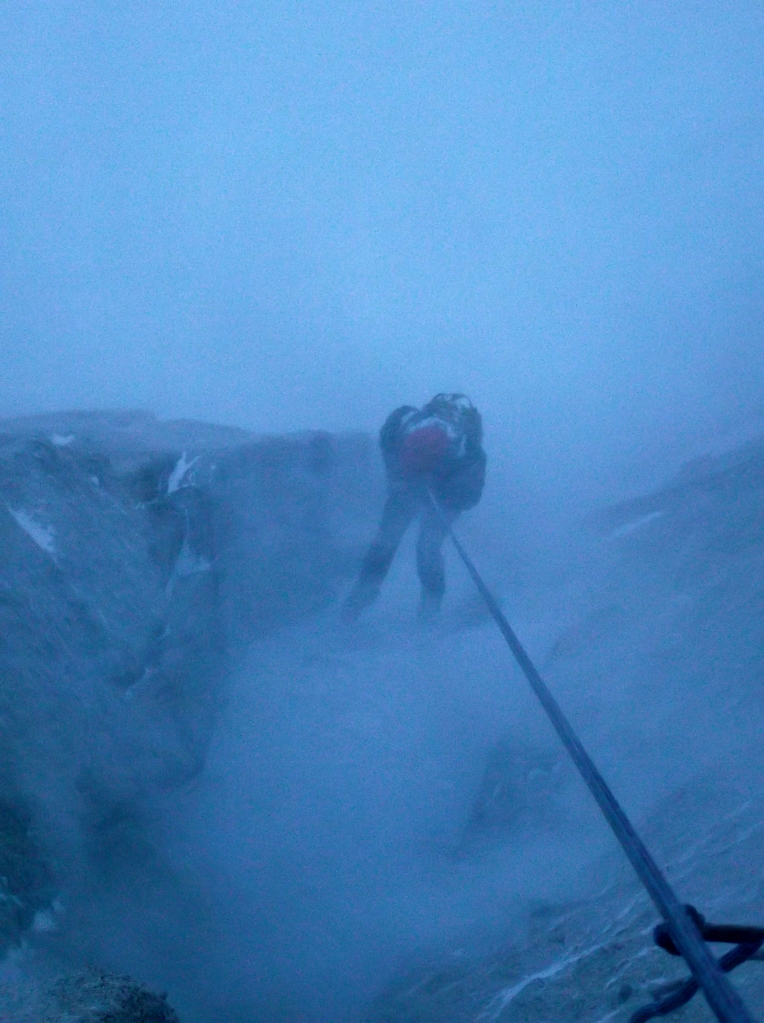
-Tenacity: Phil Wesseler and Josh Kali are two “average” guys whose efforts last year I really admired. Drew and I shared a taxi with them to the trailhead and I cringed when I saw them load their worn out gear. I guess their time was better spent climbing/training than making money.
Throughout the season, while I was switching back and fourth between various objectives with every little change in the forecast, Phil committed wholeheartedly to the Supercanaleta. He tried it consistently window after window. This included taking part in a significant rescue on the route that would have shaken almost anyone else’s confidence. But he persisted and on his fifth attempt, with new arrival Josh, he succeeded.
Afterwards they rejected the comforts of El Chalten and modern speed tactics. Instead they spent two weeks on the ice cap suffering through bad weather before the skies cleared. This strategy succeeded where so many stronger climbers had failed and they became the only team to summit Cerro Torre last season (this included a third partner who I do not know). Rumor has it, an 11 hour lead of the final pitch! Sometimes you have to try things differently. Truly inspiring work, congratulations boys.
Tread carefully down there, as Ben Erdmann warned me shortly after my arrival, “These mountains are hungry for humans.” Be safe.
Helpful Links
Pataclimb – Online Guidebook by Rolando Garibotti
Patagonia Unplugged – Some tips and classic route descriptions by Freddie Wilkinson
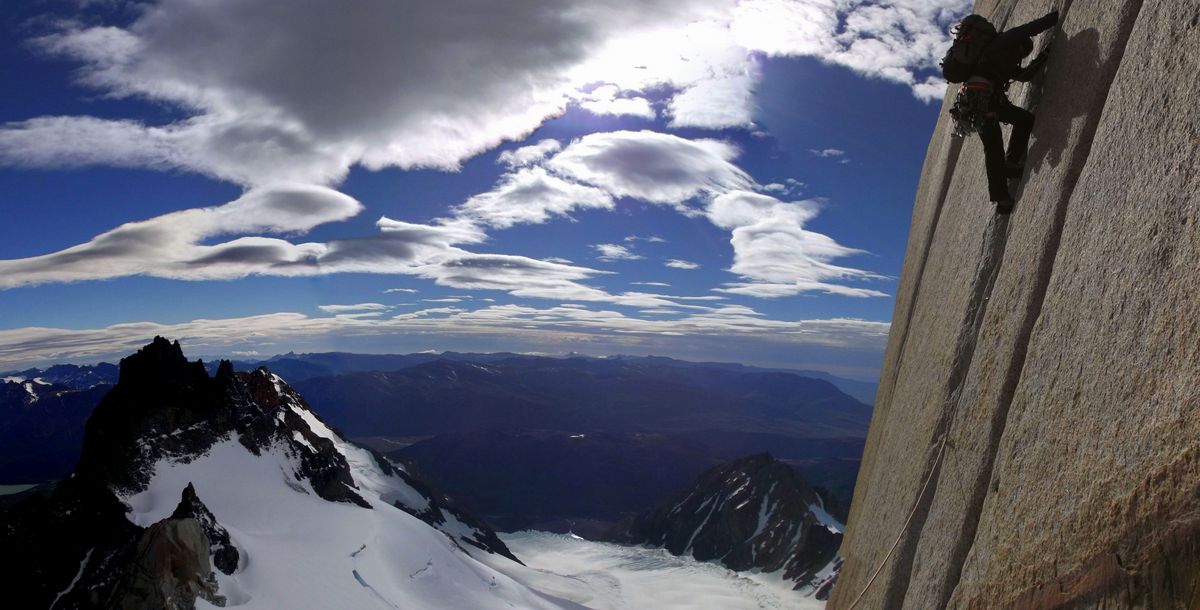
That is one hell of a first post. Keep it up.
LikeLike